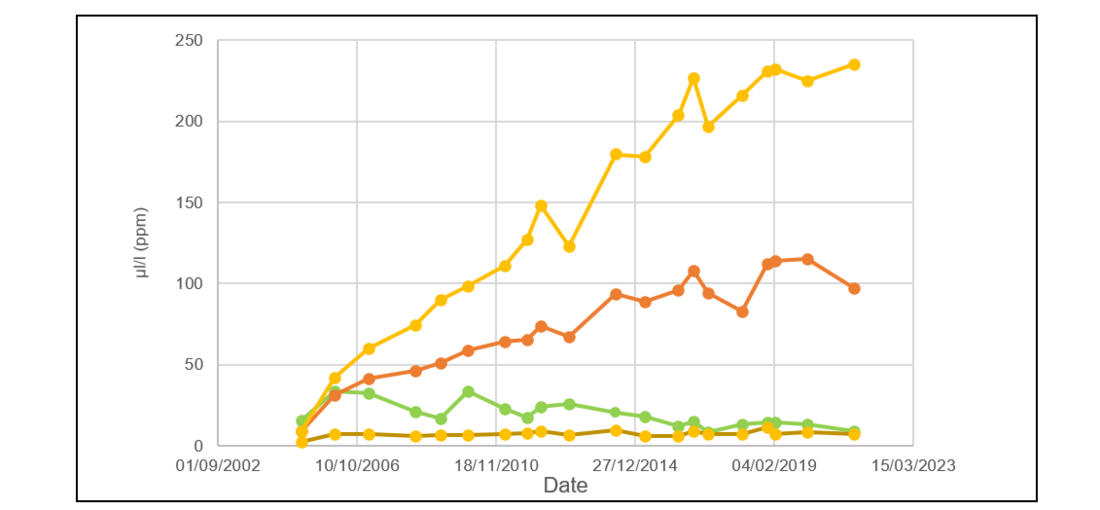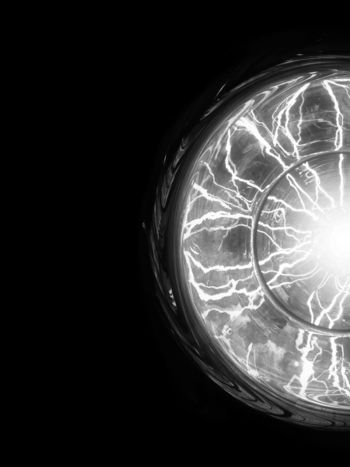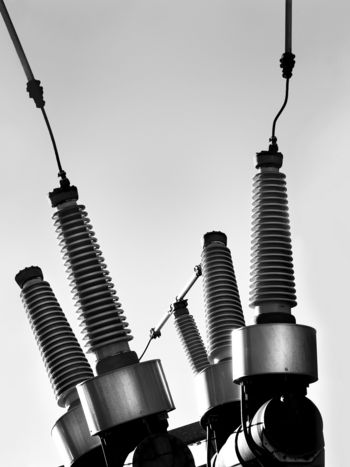New Laboratory Methodologies for Investigating of Insulating Liquids — Further Developments in Key Functional Properties
The scenery of insulating liquids is continuously changeing, requiring questioning existing standards and seeking answers for reproducing of phenomena in service in the lab, as well as methods for determining of the life span of liquids. Questions concerning environmental, health and safety are more actual than ever. All those properties can be considered as functional requirements for liquids. The aim of the brochure has been to look on some of them and propose solutions, e.g. for the fault free gassing of some liquids in service, for the use of oxidation inhibitor as an ageing marker in mineral oils, evaluation of methods able to distinguisch between individual hazardeous compounds like PAC/PAHs as well as the measurement uncertainty for thermal characteristics of insulating liquids.
Members
Convenor (DE)
I. ATANASOVA-HOEHLEIN
Leader Task Force dealing with Stray Gassing (IT)
R. MAINA
Leader Task Force dealing with PCA/PAH (SA)
C. WOLMARANS
Y. BERTRAND (FR), M. BOBRYSHEV (RU), I. BOCSI (HU), E. CASSERLY (US), S. EECKHOUDT (BE), M. GRISARU (IL), A. GYORE (HU), A.M. DALE (NO), A. HILKER (DE), J. JANKOVIC (RS), J. LUKIC (RS), L. LUNDGAARD (NO), R. MARTIN (UK, A. MARTINS (BR), A.PEIXOTO (PT), C. PERRIER (FR), K. RAPP (US), J. RASCO (US), SIMONE SACCO (IT), FABIO SCATIGGIO (IT), M. SZEBENI (HU), A. TONG IN (TH), V. VASOVIC (RS), J. WALKER (FR), H. WILHELM (BR)
Corresponding Members
S. BHUMIWAT (NZ), I. FOFANA (CA), P. MAVROMMATIS (UK), M.C. LESSARD (CA), V. NULL (DE)
Scope/Methodology
Two main methods have been used throuhout the brochure :
- Performing of Round Robin Tests on
- thermo-oxidative gassing of insulating liquids
- methods for determination of hazardeous PAC/PAH compounds as sum and as individual compounds
- additives in mineral oils and ester liquids
- thermal properties of insulating liquids
and
- Referencing as many as possible real cases describing
- thermo-oxidative gassing and the correlation to the elaborated RRT
- change of ageing parameters with inhibitor depletion
Description of the Technical Brochure
The first chapter of the brochure deals in a Round Robin Test aiming at developing a method for elaborating of the possible thermo-oxidative stray gassing of isulating liquids from different origin – mineral oils, synthetic and natural esters and silicon liquids. This Cigre WG has been run along the last update of IEC 60296 and the results have been included in its last revision from 2020.
The thermo-oxidative behaviour of some natural and synthetic esters, as well as silicone liquids has been explored under the same conditions.
The major findings out of the Round Robin Test are :
- Uninhibited mineral oils, as well as passivated oils tend to develop gases like hydrogen and ethane when exposed to temperstures of 105°C (max. top oil temperature for mineral oils). This phenomena, called also « stray gassing » is strongly enhanced in the presence of copper and air.
- The development of ethane with the investigated natural multi unsaturated esters takes place even in the absence of air. The presence of copper (in air or nitrogen) reduces the amount of hydrogen in comparison to the test conditions without copper.
The second chapter of the brochure describes real cases of thermo-oxidative « stray gassing » reported.
A typical example shown on Figure 1 is a family of 53 free breathing transformers 20 – 31,5 MVA, 60 kV, manufacturing year 2003 – 2014 filled with uninhibited oil. The gas-in-oil analysis shows a continuous moderate development of ethane and methane, but no increase of ethylene, hydrogen or acetylene.

Figure 1 - Exemplary development of gases due to Stray Gassing with time (yellow line – ethane, brown line – methane, green line – hydrogen, violet line – ethylene)
Although the gas evolvement in case of « stray gassing »is due to the oil constituents, existing interpretation schemes may indicate overheating and be a cause of concern for users . Very often the question arises whether this behaviour can be corrected. Some examples show, that reclaiming procedures with a subsequent inhibiting can mitigate the problem (Table 1).
Gas | 2009, prior reclaiming (ppm) | 2 years after reclaiming (ppm) |
|---|---|---|
Hydrogen | 45 | 32 |
Methane | 96 | 8 |
Ethane | 205 | 20 |
Ethylene | 30 | 5 |
Carbon monoxide | 579 | 332 |
Carbon dioxide | 5986 | 4412 |
Oxygen | 6150 | 24850 |
Nitrogen | 55493 | 68080 |
The third brochure chapter deals with methods for identification of PCA/PAHs in mineral insulating oils. Round Robin Tests based on methods for sum and individual identification for those compounds have been carried out.
The fourth chapter of the brochure is dedicated to methods of identification of additives not only in mineral oils but also in ester insulating liquids. A Round Robin Test has been performed by means of a HPLC (High Pressure Liquid Chromatography) method. The used procedure delivered quite good results with mineral oils, but had still interferences with ester liquids. The results are promising, nevertheless further investigation and improvement of the method is necessary.
The fifth chapter of the brochure is dedicated to the ageing monitoring in insulating liquids via inhibitor consumption. In this chapter several examples of transformer in service have been described, where the continuous depletion of the inhibitor has been correlated to the further oil parameters (Figure 2).

Figure 2 - DBPC (di -t-butyl-p-cresol) consumption and change of Acidity (TAN), IFT and DDF of oil from transformer in a hydro power plant
Some ideas for alternative methods for the measurement of oxidation stability in natural esters have been described.
The sixth chapter of the brochure deals with a Round Robin Test dedicated to the measurement uncertainty of thermal properties of insulating liquids – kinematic viscosity, density, thermal conductivity and specific heat capacity at different temperatures. The highest deviations in the measurement results are in the thermal conductivity, due to convection.
Conclusions
Functional properties of insulating liquids are important for the design of electrical equipment. Although numerous standards, describing different functional properties in unused state and in service exist, there is always a need of update, especially when other insulating liquids like ester liquids are entering the market.
A laboratory method describing the thermo-oxidative stray gassing of mineral oil, as well as synthetic and natural ester liquids has been developed.
This method is able to differentiate between fault gas development, due to the constitution of the insulating liquid and due to failure in the electrical equipment. In the present criteria for evaluation of gas-in-oil analysis according to...


